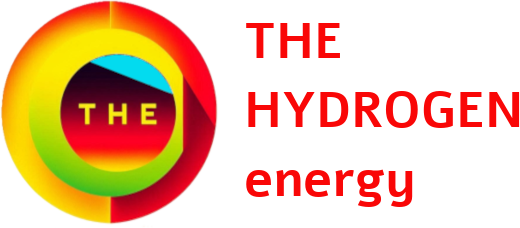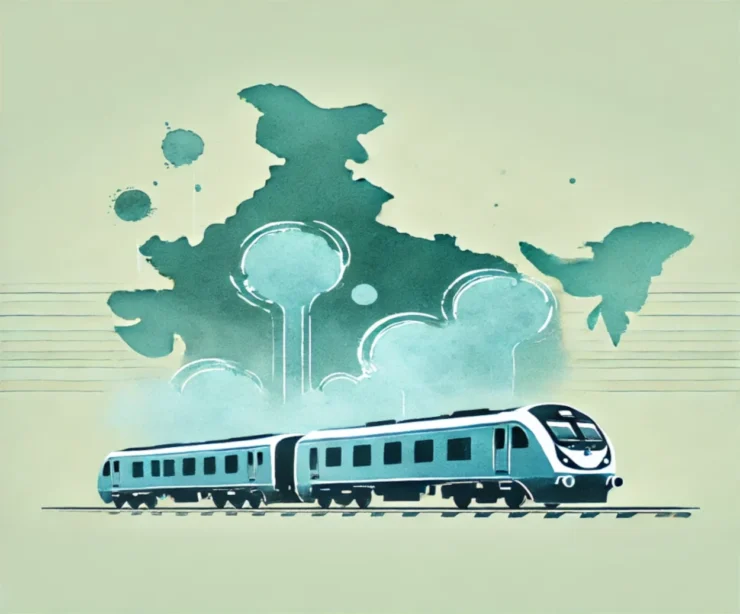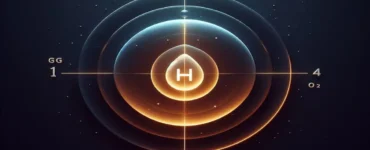India’s Hydrogen Train Pilot Project: Technical Overview
India’s Hydrogen Train, Indian Railways is set to revolutionize its operations with the introduction of hydrogen-powered trains, marking a significant step towards sustainable rail transport. This initiative is part of the “Hydrogen for Heritage” program, which aims to retrofit existing Diesel Electric Multiple Unit (DEMU) trains to operate on hydrogen fuel cells. The first refueling station will be established in Jind, Haryana, and is currently on system integration, soon ready for testing and trial run! (Originally expected to be trial ready by December 2024).
India Hydrogen Train Pilot- Location, Top Speed, Route Map:
- Location: Sonipat – Jind, Haryana, Northern Railways
- Pilot Route: Sonipat-Jind (89 km) with 12 stations, Altitude 300 meter approx. above mean sea level
- 2 Trains of Five Cars each
- Operating Speed: 110 KMPH
- Test Speed: 120 KMPH
- Top Speed: 140 KMPH
India’s hydrogen train project will involve retrofitting a DEMU rake currently powered by diesel to operate on hydrogen. Converting a ten-car diesel train with head motor cars into two five-car trains powered by hydrogen and battery traction. The original train was built at Indian Railways’ ICF plant in Chennai. This transition aligns with Indian Railways’ broader goals of reducing carbon emissions and enhancing sustainability in transportation.
DEMU – Existing Diesel Electric Multiple Unit (DEMU) Trains, already deployed by Indian Railways.
India Hydrogen Train: Route Map, Stations, Halts
Sonipat – Jind, Hariana section of Northern Railways has total distance of 89 Kms. The section has 12 no. halts or stations. Altitude 300 meter approx. above mean sea level.
India Hydrogen train Route map, Drive cycle: Between Sonipat-Jind (up and down trip)
| Code | Station Name | Distance (KM) |
|---|---|---|
| SNP | Sonipat | 0 |
| BRNI | Barwasni Halt | 9 |
| MOHR | Mohana Haryana | 18 |
| LATH | Lath Halt | 25 |
| RBHR | Rabhra Halt | 33 |
| GHNA | Gohana | 40 |
| KHDR | Khandari Halt | 47 |
| BUTN | Butana Halt | 52 |
| ISRI | Ishapur Kheri Halt | 56 |
| BHMW | Bhambhewa | 61 |
| LTKR | Lalit Khera Halt | 69 |
| PPDE | Pandu Pindara | 80 |
| JCY | Jind City | 86 |
| JIND | Jind Junction | 89 |
Note, this is only Pilot testing project, not officially or ready for the passengers
India’s Hydrogen train: Technical Specifications
The hydrogen fuel cell based rail propulsion technologies powered by PEMFC (proton
exchange membrane based Fuel Cell) along with a suitably sized battery bank are being
tried out globally for powering railroad vehicles. Elimination of fossil fuel and very low
emissions are inherent advantages of such a rolling stock, is the key intent of India’s hydrogen train project. Indian Railways plans to convert the existing 1600 hp DEMU into hybrid fuel cell and battery based Distributed Power Rolling Stock (DPRS).
India’s hydrogen train – Hydrogen Production and Refueling Station:
- Electrolyzer Type: 1 MW Proton Exchange Membrane (PEM) electrolyzer
- Hydrogen Production Capacity: Approximately 420 kg per day
- Hydrogen Storage Capacity: 3,000 kg
- Refueling Infrastructure:
- Two hydrogen dispensers with pre-cooler integration
- Hydrogen compressors for efficient refueling
India’s hydrogen train Specifications:
- With a 1200 HP (900 kW) output, each India hydrogen train represents a leading achievement in its class, surpassing other hydrogen train technologies currently in use in countries such as Germany, France, Sweden, and China
- Power Output: Each hydrogen train will have a total power output 900 kW, comprising:
- 800 kW (max) from fuel cells
- 400 kW (max) from batteries
- Onboard Hydrogen fuel type: Hydrogen gas in removable, refillable cylinders as compressed gaseous hydrogen (CGH2) at 350 bar
- Fuel Cell: Proton Exchange Membrane (PEM)
- Fuel Cell Module: Eight integrated units of Ballard Power Systems’ FCmove-HD+ (100 kW each)
- India’s Hydrogen Train Design Features:
- Retrofitting without modifying train bogies or car bodies
- Hydrogen tanks can be replaced within 45 minutes for fast refueling
- Maximum operating temperature: +55 °C (in sunlight), +47 °C (in shade)
- Dynamic trials of India’s Hydrogen Train will start from 2025, with a target of covering 50,000 km during the testing phase.
- The hydrogen trains are designed for a maximum axle load limit of 20.3 tons.
- Hybrid fuel cell and battery based Distributed Power Rolling Stock (DPRS)
- With regenerative braking
- India hydrogen train cost – The project, including infrastructure, is said to be INR 111.83 crores or ($13.5 million)
India’s Hydrogen Train: Suppliers Involved
BHEL is the primary integrator, infrastructure provider, and responsible for technical diligence and approval for India hydrogen train project since its inception. Also ensures compliance with all safety norms for hydrogen usage.
- Medha Servo Drives (MSD): Awarded the contract for retrofitting the DEMU trains. They are responsible for integrating the hydrogen fuel cell systems and ensuring operational efficiency. MSD has previously refurbished diesel trains at the Integral Coach Factory in Chennai.
- GreenH Electrolysis: Contracted to provide engineering, procurement, and construction services for the hydrogen production and refueling station. They will supply the PEM electrolyzer for the India’s Hydrogen Train from their new manufacturing facility in Jhajjar, Haryana.
- Ballard Power Systems: A Canadian company supplying the fuel cell technology essential for powering the hydrogen trains. Their FCmove-HD+ modules are specifically designed for heavy-duty applications in rail transport.
- Indian Railways has appointed Germany’s TUV-SUD to conduct a third-party safety audit process for the India’s Hydrogen Train Project
Economic Considerations – India Hydrogen Train
The running cost of India Hydrogen Train project which is hydrogen fuel based is yet to be established in the Indian Railways context. Initially, the operating costs for hydrogen-powered train sets are expected to be higher but will decrease as more trains are introduced. Moreover, using hydrogen as a fuel offers significant advantages in advancing green transportation technologies, supporting the goal of zero carbon emissions as a clean energy source.
India’s Hydrogen Train: Budget Allocation
Indian Railways (IR) plans to operate 35 hydrogen trains under the “Hydrogen for Heritage” initiative, with an estimated cost of ₹80 crores per train and ₹70 crores per route for ground infrastructure on various heritage and hill routes.
India Hydrogen Train: Future Outlook
The successful implementation of this India’s hydrogen train project could set a precedent for further advancements in green transportation across India. It represents not only a commitment to sustainable practices but also an opportunity to lead in innovative railway technology globally. As Indian Railways works towards electrifying its tracks by FY25, India’s hydrogen train project initiative is seen as a logical next step in its journey towards becoming a net-zero carbon emitter by 2030.
In conclusion, India’s first hydrogen train project showcases a significant leap towards sustainable rail transport, driven by collaboration among key suppliers and innovative technology aimed at reducing environmental impact while enhancing operational efficiency.
Source: https://pib.gov.in/PressReleasePage.aspx?PRID=1896102
Article updated on Jan 2025.







Add comment